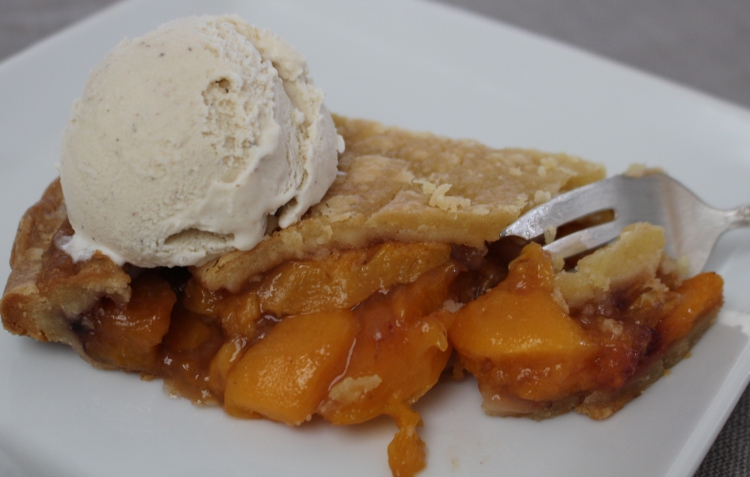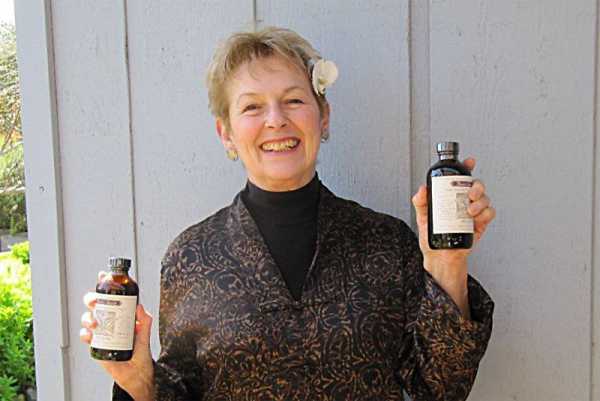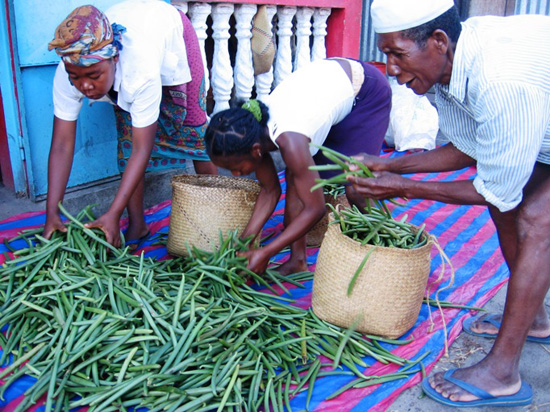
I'm amazed at how superior your vanilla is!
– Des, The Grommet
Vanilla is the only edible fruit of the orchid family, the largest family of flowering plants in the world. It’s a tropical orchid, and there are more than 150 varieties of vanilla, though only two types – Bourbon and Tahitian — are used commercially.
Vanilla grows within the 20-degree band either side of the Equator and is native to the Americas. The vanilla you know best, Vanilla planifolia (also known as fragrans), traditionally grew wild on the Atlantic Gulf side of Mexico from Tampico around to the northeast tip of South America, and from Colima, Mexico to Ecuador on the Pacific side. It also grew throughout the Caribbean.
The Olmeca people on the Gulf Coast of Mexico were perhaps the first to use vanilla as a flavoring in beverages. Before that, vanilla was used as a fragrance in temples and the flowers were placed inside of amulets to protect the wearer from the evil eye.
The Totonaca people of the Gulf coast of Mexico were probably the first people to domesticate vanilla. They continue to cultivate the fruit that they consider was given to them by the gods. Vanilla is a sacred and very important part of their culture and their lives.
Vanilla first left Mexico in the early 1500s on ships bound for Spain. It was originally believed only to have value as a perfume. It wasn’t until Cortes arrived in 1519 that they discovered that it was also used as a flavor.
Until the late 19th century, Mexico had the monopoly on growing vanilla, but now Madagascar grows the majority of the world’s crop. Additional countries that grow vanilla include Costa Rica, Guatemala, Uganda, Kenya, China, India, Indonesia, Papua New Guinea, Tonga, Fiji, Tahiti, Hawaii and other Pacific Islands.
Vanilla is the world’s most labor-intensive agricultural crop, which is why it’s so expensive. It can take up to three years after the vines are planted before the first flowers appear. The fruits, which resemble large green beans, must remain on the vine for nine months in order to completely develop their signature aroma. However, when the beans are harvested, they are still partially green and therefore have neither flavor nor fragrance. They develop these distinctive properties during the curing and drying process.
When the beans are harvested, they can be dried entirely by sun. However, in many countries they are treated with hot water or heat and are then placed in the sun every day for weeks-to-months until they have shrunk to 20% of their original size. After this process is complete, the beans are sorted for size and quality. Then they will rest for a month or two to finish developing their full flavor and fragrance. By the time they are shipped around the world, their aroma is quite remarkable!
Because vanilla has always been so valuable, it has a long history of robbery and intrigue. In Madagascar, vanilla rustling has been a major problem when the price for vanilla is at a cyclic high. Growers brand the individual beans with pins or a knife when they are green and the marks remain after the beans are dried. Whenever someone suspects that their beans are stolen, they can determine by the distinctive tattoo whether or not the beans are theirs.
Bourbon vanilla is named for the island now known as Reunion. In the early 19th century it was known as Ile Bourbon. The Bourbon vanilla plant stock originally came from Mexico. Bourbon vanilla and Mexican vanilla are essentially the same though soil and climate can produce subtle flavor differences.
Tahitian vanilla plant stock also originally comes from Mexico and is a cross of Vanilla planifolia and Vanilla odorata. Genetic modification changed its flavor and fragrance and it is now considered its own species. It is significantly different from Bourbon and Mexican vanilla.
The United States is the world’s largest consumer of vanilla, followed by Europe – especially France. Between 1400 and 2300 tons of dried vanilla is produced worldwide each year. This is significantly less than cacao (chocolate) and coffee, which has millions of containers of cacao and coffee beans.
Vanilla is not only used as a flavor in foods and beverages, but also in perfumes. It’s also used in many industrial applications such as a flavoring for medicines and as a fragrance to conceal the strong smell of rubber tires, paint, and cleaning products. However, these days most of the vanilla fragrances and much of vanilla flavorings are imitation.
The dairy industry uses a large percentage of the world’s vanilla in ice creams, yogurt (fresh and frozen), and other flavored dairy products. Despite all the wonderful ice cream choices available in the market place, most customers say, “Make mine vanilla!”
Because vanilla is so much in demand, and because it’s so expensive, synthetics are often used instead of natural vanilla. In fact, 98% of vanilla used as a flavor and fragrance is synthetic. A new generation of imitation vanillas threaten the vanilla industry’s existence. Many corporations substitute imitation vanilla and then call it “natural flavors” on the label. This undercuts the growers, who can’t compete with the cheaper synthetic vanillas, and many growers have torn up their crops and left their land in search of work in industrialized countries.
Please support the growers by buying only pure vanilla here.
Read the “Facts and FAQs About Vanilla.
I was given a small bottle of Rain’s Choice in a gift basket and I have been hooked ever since. The flavor makes all of my baking so much better! I will never use grocery store vanilla again!


© 2021. All Rights Reserved
Designed/Developed by Kat & Mouse
One Response
The vanilla spiced chai is a godsend blend. Powerful combo of nutmeg cinnamon and cloves added ginger for diabetes cancer and oxygenation. Simply wonderful!